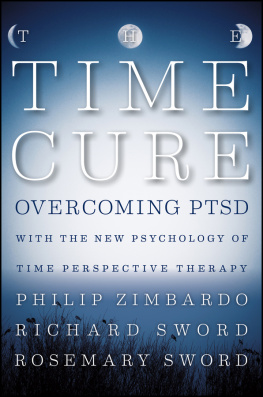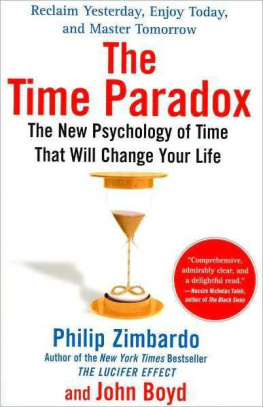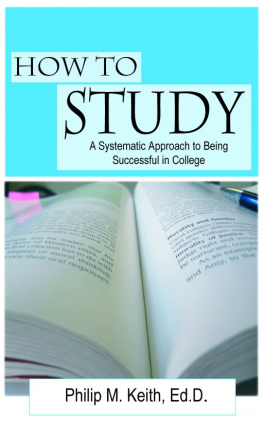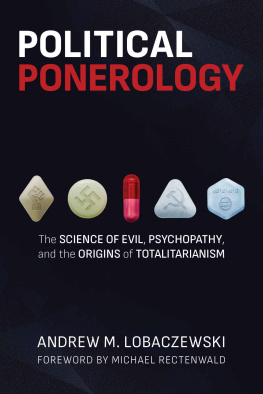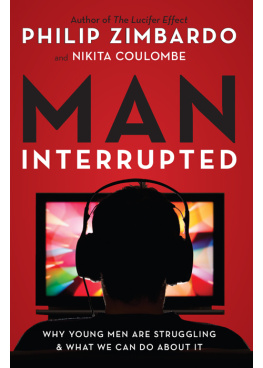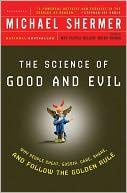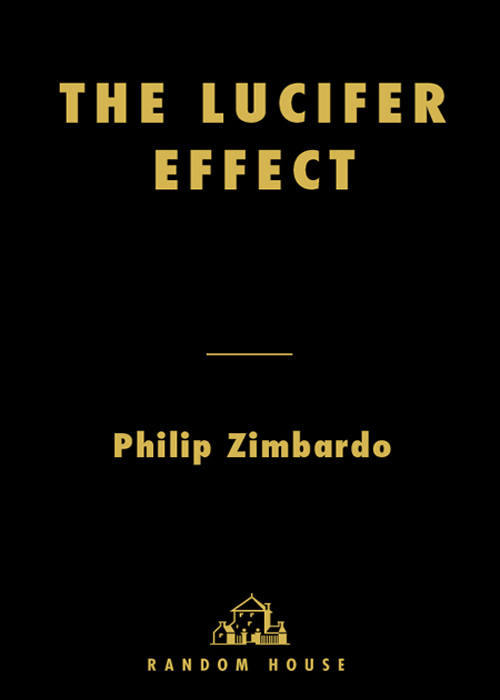

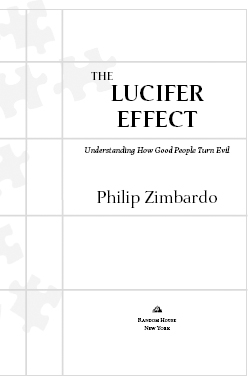
Contents
ONE
The Psychology of Evil: Situated Character Transformations
TWO
Sundays Surprise Arrests
THREE
Let Sundays Degradation Rituals Begin
FOUR
Mondays Prisoner Rebellion
FIVE
Tuesdays Double Trouble: Visitors and Rioters
SIX
Wednesday Is Spiraling Out of Control
SEVEN
The Power to Parole
EIGHT
Thursdays Reality Confrontations
NINE
Fridays Fade to Black
TEN
The SPEs Meaning and Messages: The Alchemy of Character Transformations
ELEVEN
The SPE: Ethics and Extensions
TWELVE
Investigating Social Dynamics: Power, Conformity, and Obedience
THIRTEEN
Investigating Social Dynamics: Deindividuation, Dehumanization, and the Evil of Inaction
FOURTEEN
Abu Ghraibs Abuses and Tortures: Understanding and Personalizing Its Horrors
FIFTEEN
Putting the System on Trial: Command Complicity
SIXTEEN
Resisting Situational Influences and Celebrating Heroism
Dedicated to the serene heroine of my life,
Christina Maslach Zimbardo
Acknowledgments
This book would not have been possible without a great deal of help at every stage along the long journey from conception to its realization in this final form.
EMPIRICAL RESEARCH
It all began with the planning, execution, and analysis of the experiment we did at Stanford University back in August 1971. The immediate impetus for this research came out of an undergraduate class project on the psychology of imprisonment, headed by David Jaffe, who later became the warden in our Stanford Prison Experiment. In preparation for conducting this experiment, and to better understand the mentality of prisoners and correctional staff, as well as to explore what were the critical features in the psychological nature of any prison experience, I taught a summer school course at Stanford University covering these topics. My co-instructor was Andrew Carlo Prescott, who had recently been paroled from a series of long confinements in California prisons. Carlo came to serve as an invaluable consultant and dynamic head of our Adult Authority Parole Board. Two graduate students, William Curtis Banks and Craig Haney, were fully engaged at every stage in the production of this unusual research project. Craig has used this experience as a springboard into a most successful career in psychology and law, becoming a leading advocate for prisoner rights and authoring a number of articles and chapters with me on various topics related to the institution of prisons. I thank them each for their contribution to that study and its intellectual and practical aftermath. In addition, my appreciation goes to each of those college students who volunteered for an experience that, decades later, some of them still cannot forget. As I also say in the text, I apologize to them again for any suffering they endured during and following this research.
SECONDARY RESEARCH
The task of assembling the archival prison experiment videos into DVD formats from which transcripts could be prepared fell to Sean Bruich and Scott Thompson, two exceptional Stanford students. In addition to highlighting significant episodes in these materials, Sean and Scott also helped pull together a wide array of background materials that we had gathered on various aspects of the study.
Tanya Zimbardo and Marissa Allen assisted with the next task of helping to organize and assemble extensive background materials from media clippings, my notes, and assorted articles. A team of other Stanford students, notably Kieran OConnor and Matt Estrada, expertly conducted reference checking. Matt also transferred my audiotaped interview with Sergeant Chip Frederick into an understandable typescript.
I value the feedback that I received on various chapters in first and second drafts from colleagues and students alike, among them Adam Breckenridge, Stephen Behnke, Tom Blass, Rose McDermott, and Jason Weaver. Anthony Pratkanis and Cindy Wang earn special thanks for their assistance with the section of the final chapter that deals with resisting unwanted influence, as does Zeno Franco for his contributions to the new views on the psychology of heroism.
My understanding of the military situation at Abu Ghraib and other theaters of the war benefited from the wisdom of Warrant Officer Marci Drewry and of Colonel Larry James, also a military psychologist. Doug Bracewell has continually supplied me with useful online sources of information about a host of topics related to issues I deal with in the two chapters of the book on Abu Ghraib. Gary Myers, the legal counsel for Sergeant Frederick, not only served on this case for an extended period without remuneration but also provided me with all the source materials and information that I needed to make sense of that complex setting. Adam Zimbardo offered a perceptive analysis of the sexual nature of the trophy photos that emerged from the fun and games on Tier 1As night shift.
In partitioning my acknowledgments, a major share goes to Bob Johnson (my psychologist co-author buddy on our introductory psychology textbook, Core Concepts). Bob read the entire manuscript and offered endlessly valuable suggestions on ways to improve it, as did Sasha Lubomirsky, who helped to coordinate Bobs input with that of Rose Zimbardo. Rose is a Distinguished Professor of English Literature who made sure that every sentence of this book functioned as it should to convey my message to general readers. Thanks to each of them for handling this chore with such grace and good sense.
Thanks also to my Random House editor, Will Murphy, for his meticulous editing, a lost art among many editors, and his valiant attempt to pare it down to essential themes. Lynn Anderson performed admirably and astutely as copy editor, who, along with Vincent La Scala, added consistency and clarity to my messages. John Brockman has been the guardian angel agent for this book and its promotion.
Finally, having written for a dozen or so hours on end, day in and night out, my aching body was prepped for the next round by my massage therapist, Gerry Huber, of Healing Winds Massage in San Francisco, and by Ann Hollingsworth of the Gualala Sea Spa, whenever I worked at my Sea Ranch hideout.
To each of these helpers, family, friends, colleagues, and students, who enabled me to transform thoughts into words into a manuscript and into this book, please accept my sincerest thanks.
Ciao,
Phil Zimbardo
Preface
I wish I could say that writing this book was a labor of love; it was not that for a single moment of the two years it took to complete. First of all, it was emotionally painful to review all of the videotapes from the Stanford Prison Experiment (SPE) and to read over and over the typescripts prepared from them. Time had dimmed my memory of the extent of creative evil in which many of the guards engaged, the extent of the suffering of many of the prisoners, and the extent of my passivity in allowing the abuses to continue for as long as I didan evil of inaction.
I had also forgotten that the first part of this book was actually begun thirty years ago under contract from a different publisher. However, I quit shortly after beginning to write because I was not ready to relive the experience while I was still so close to it. I am glad that I did not hang in and force myself to continue writing then because this is the right time. Now I am wiser and able to bring a more mature perspective to this complex task. Further, the parallels between the abuses at Abu Ghraib and the events in the SPE have given our Stanford prison experience added validity, which in turn sheds light on the psychological dynamics that contributed to creating horrific abuses in that real prison.
Next page



